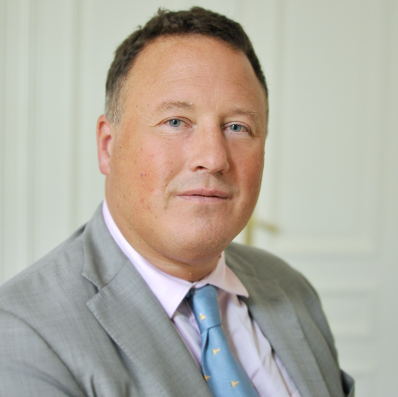On 3 October WHO Director-General Dr Tedros Adhanom Ghebreyesus announced his new leadership team. Most of the diplomatic and (social) media reaction focused on the fact the new team is 60% female. Commentators have been overwhelmingly positive about this. Just as interesting, though is the geopolitics of the new team. Across the Alps in the Austrian ski resort of Gastein the cream of Europe’s health policy experts debated how to deliver better health for less money.
As in previous years, the answers they came up with were not entirely convincing. Vytenis Andriukaitis, the European Commissioner for Health, did however have an interesting announcement to make. In 2018 the Commission will launch an initiative to support EU Member States’ vaccination programmes.
One of Dr Tedros first acts when he arrived in Geneva on 1 July as the new Director-General was to ask the incumbent senior leadership team to stay on until the end of September. However, a shake-up of the team was always likely (see my blog in August). The extent of the shake-up shows Dr Tedros’s determination to drive change at WHO. Only two members of the previous team kept their jobs: Dr Ren Minghui of China continues as Assistant Director General for Communicable Diseases (previously he was Assistant Director-General for HIV/AIDS, Tuberculosis, Malaria and Neglected Tropical Diseases) and Dr Peter Salama of Australia continues as Executive Director of the Health Emergencies Programme. All the other appointments are new faces.
The most striking thing about Dr Tedros’s 14 strong senior leadership team is that 9 of them are female. As the UN has been happy to point out, this makes WHO the first of its agencies to appoint a majority female management team. Just as interesting, though, are the geopolitics of the team:
- Each of the 5 Permanent Members of the UN Security Council – the traditional “Great Powers” – is represented on the team: Russia, China, USA, UK and France
- Each of the BRICS group of emerging powers is represented: Brazil, Russia, India, China and South Africa
- Other key regional players from each continent are represented: Saudi Arabia, Germany, Italy and Australia
This looks like a team put together with an eye to influencing international political debated. Dr Tedros was Foreign Minister of Ethiopia and a major player in the African Union before coming to WHO, so the strong geopolitics of the team is unlikely to be just a coincidence. The only team member not from a major diplomatic power is Dr Joy St John, former Chief Medical Officer of Barbados. However, Barbados is part of a wider grouping of small island nations that have become a significant power bloc in the WHO’s World Health Assembly and the UN’s General Assembly. Given the interests of this grouping, it is likely not a coincidence that Dr St John has been given the job of Assistant Director-General for Climate Change and other Determinants of Health.
Some other points to note about the new WHO senior leadership team are:
- Several of the team have strong backgrounds in politics, government and health diplomacy. Most notably, Deputy Director-General Jane Ellison (UK) has been a Member of Parliament and government minister. This fits with Dr Tedros’s vision of having WHO play a more political role.
- The new team a bit “less white”, but Europeans are still over represented in comparison to their share of world population.
- Conversely, with France, Germany and Italy all represented in the top team the EU is in a good position to influence WHO, if is able to define a coherent set of priorities for global health
For full information about the members of the new WHO senior leadership team, including biographies and job titles click here.
Defining the EU’s health policy priorities
On 4 to 6 October policy makers, experts and activists from across Europe assembled in the Austrian Alps for the European Health Forum Gastien (EHFG) . This is an annual think-in on the future of European health policy: a sort of Davos with alcohol free wine. 2017 was the 20th edition of EHFG. This meant a good turn-out of star experts, such as Ilona Kickbusch of the Graduate Institute in Geneva, and a rather interesting set of scenarios for health in 2037. Nonetheless, given the diversity of experts and interest groups (e.g. pharma companies, patient groups, health NGOs, governments…) the discussions, as usual, proved inconclusive. As always, prevention and health lifestyles were mentioned as part of the solution along with new technologies and a “patient-centred care” approach to people with multiple illnesses.
There was one, somewhat unexpected, bit of excitement on the final day of the conference when Dr Vytenis Andriukaitis, European Commissioner for Health & Food Safety, announced: “The Commission is preparing an initiative to support vaccination, which we will present next year (2018), to support Member States in increasing vaccination coverage, fighting vaccine hesitancy and addressing problems with vaccine supply and production.” Suddenly we realised there was a policy agenda behind the mentions of “inequalities in vaccination” made by Commission President Jean-Claude Juncker in his State of the European Union at the European Parliament in September.
